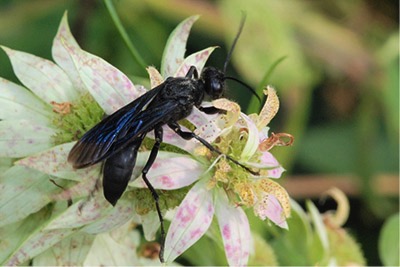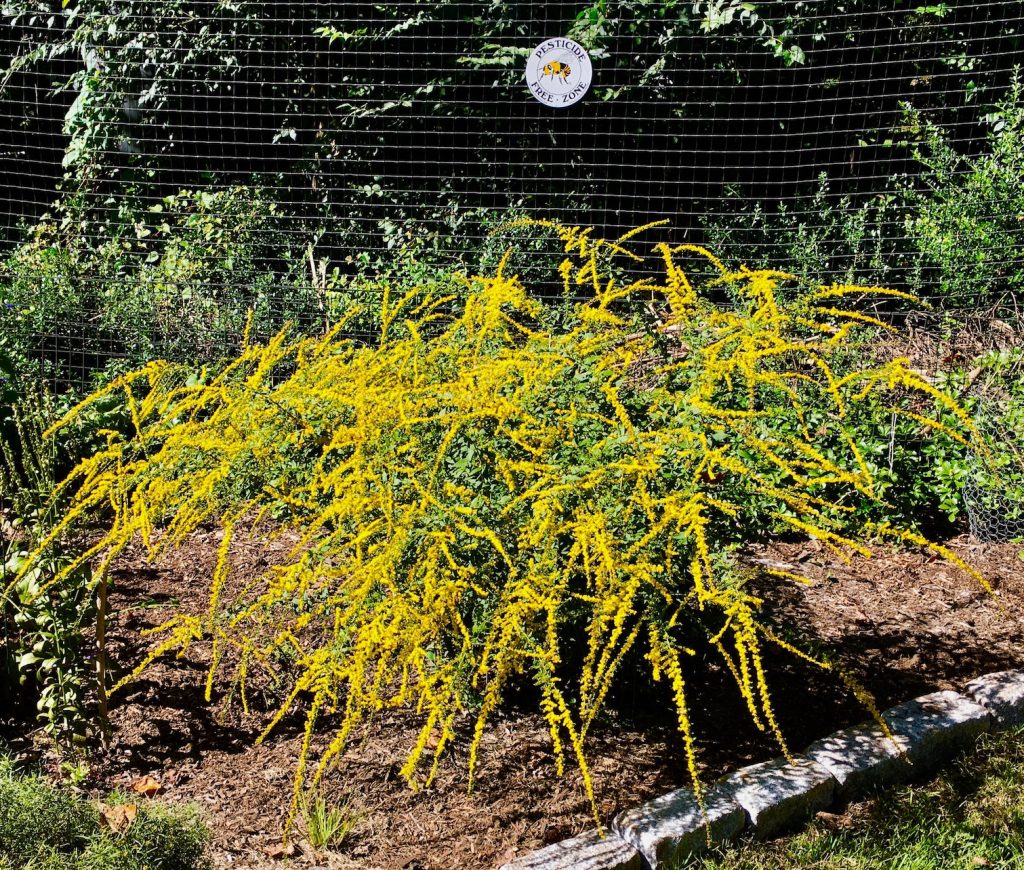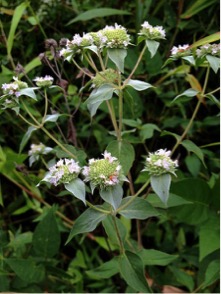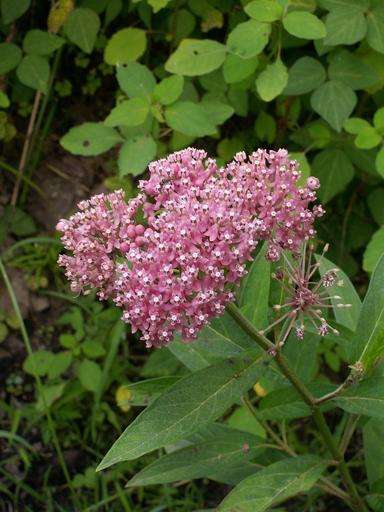
The first time I saw a great black wasp on my mountain mint, I was mesmerized by its shiny black body and iridescent black/purple wings glowing in the sunlight. The photo above does not capture the beauty of this insect. You really have to see it in person. But don’t worry, they are not aggressive to humans.
Great black wasps (Sphex pensylvanicus) are part of the Digger wasp family that create burrows in the soil. Unlike other wasps, they do not have stripes or other markings. They are common throughout the U.S. except the Pacific Northwest. You will see them in mid-to-late summer in fields, meadows, pastures and yards. These wasps look fierce, but are not aggressive. Males don’t even have stingers, but females do. However, the female will sting only if her nest is disturbed.
Great black wasps are ground nesting solitary wasps, meaning they do not form colonies like bumblebees. Like other insects, the only purpose of the male is to mate. The female does all the heavy lifting. She works very hard to build and provision a nest, lay eggs and raise the young. The young hatch from an egg and undergo a complete metamorphosis through larva, pupa, and adult stages.
Please resist the urge to exterminate these wasps. Great black wasps are beneficial insects. They are pollinators and also control the numbers of grasshoppers, locusts and cicadas that feed on crops and your plants.
I hope you will learn to appreciate these beautiful insects and welcome them to your garden. Plant mountain mint, milkweed, and goldenrod if you would like to attract the beautiful great black wasp.




Leave a Reply